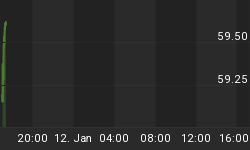In an a low interest rate environment, it was not surprising to see real estate investment trusts (REITs) move up in our ETF rankings over the past few months. Monitoring the health of market leaders is one way to monitor the health of the entire market. When market leaders begin to show cracks, it tends to be negative for the general market. Since our latest ETF rankings saw REITs drop five spots, we decided to take a closer look.
From a fundamental perspective, yield-chasing investors have pushed REIT valuations higher. In a May 15 MarketWatch article, Greg Brewer, executive director of research at Value Line, cautioned REIT investors:
The industry Brewer thinks is a trap for investors now is real estate investment trusts, which have been popular because so many people are seeking yield, but which Brewer said have been bid up way too far, making them a bad proposition right now. Equity Residential (EQR), Boston Properties (BXP), AvalonBay (AVB), BRE Properties (BRE)... it's not that these companies are bad companies - they're not - but they are pretty fully priced right now, and as an investor, I would be concerned that I am going to get in and I am going to get crushed.
On May 16, the REIT ETF (IYR) opened in positive territory, but experienced selling pressure for the rest of the day. IYR closed near the low of the session. The daily chart below shows the performance of REITs relative to the S&P 500. Point A highlights the intraday reversal that occurred relative to the S&P 500 on May 16. Near point B, MACD shows slowing momentum for REITs relative to the S&P 500. MACD will experience a "bearish cross" if the black line drops below the red line.

With loans difficult to obtain and the diminished appeal of owning a home, apartments have been in high demand. According to an April 27 Bloomberg story:
Real estate investors competing to buy Manhattan apartment buildings have sent prices to record highs as rental demand surges, reducing yields on the properties to the lowest in more than six years. The capitalization rate, a measure of investment return that declines as prices rise, averaged 4.4 percent for Manhattan multifamily buildings in the first three months of this year, the lowest since the third quarter of 2005, according to New York- based data firm Real Capital Analytics Inc.

The current daily chart of IYR below shows bearish divergences between two indicators, MACD and RSI, and price. A bearish divergence occurs when price makes a higher high, and the indicators fail to make a higher high. The divergences can be seen by comparing the slopes of lines A, B, and C. In this chart, MACD has already experienced a bearish cross (black below red below - see red arrow). The Relative strength Index (RSI) has also dropped below 50, which indicates the "bears are in control" (near orange arrow).

With the Fed promising to keep rates low for some time, REITs may continue to be market leaders. However, given the situation in Europe, stretched valuations, and the recent deterioration in the charts, REITS may not be immune to further weakness.















